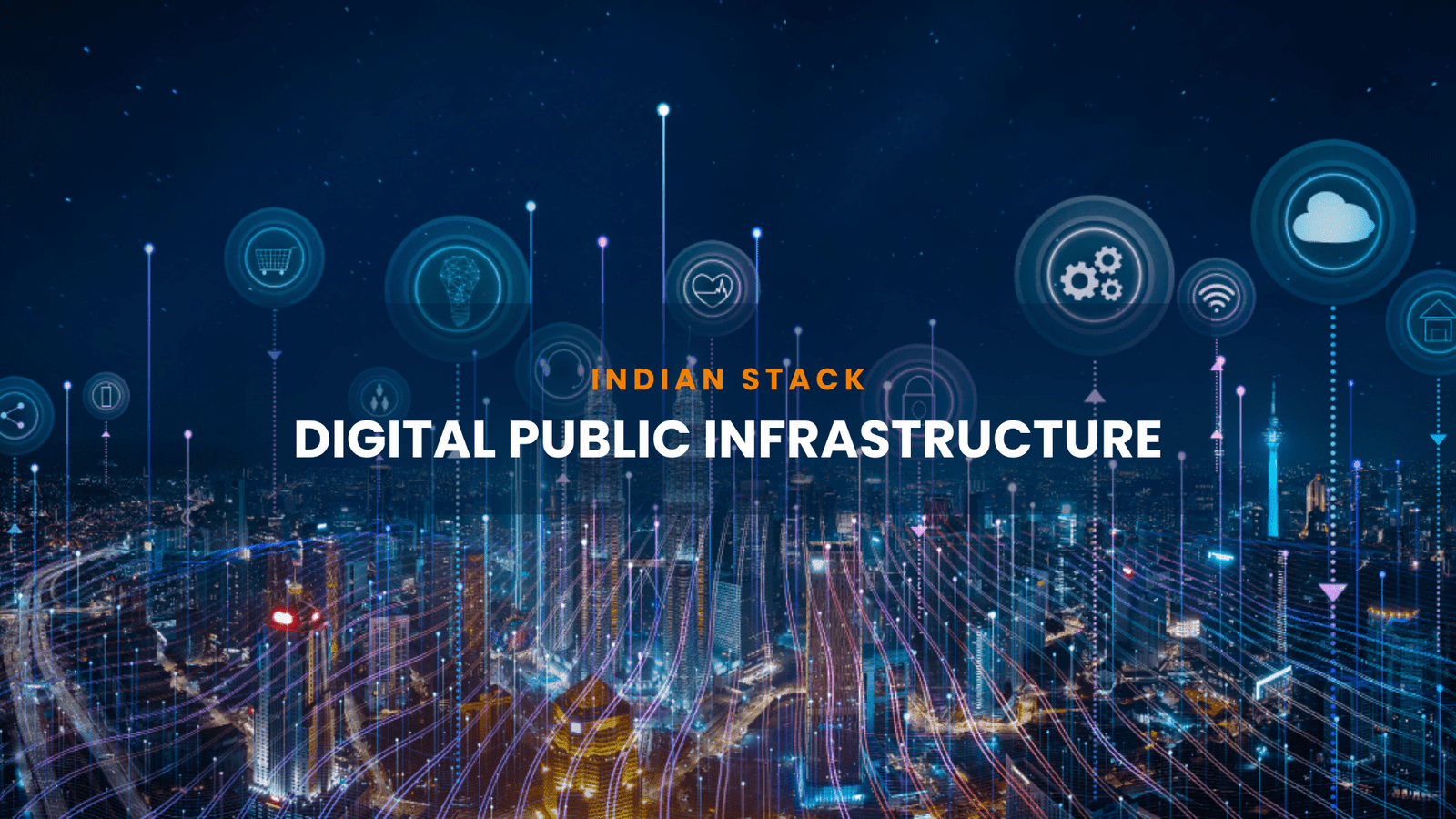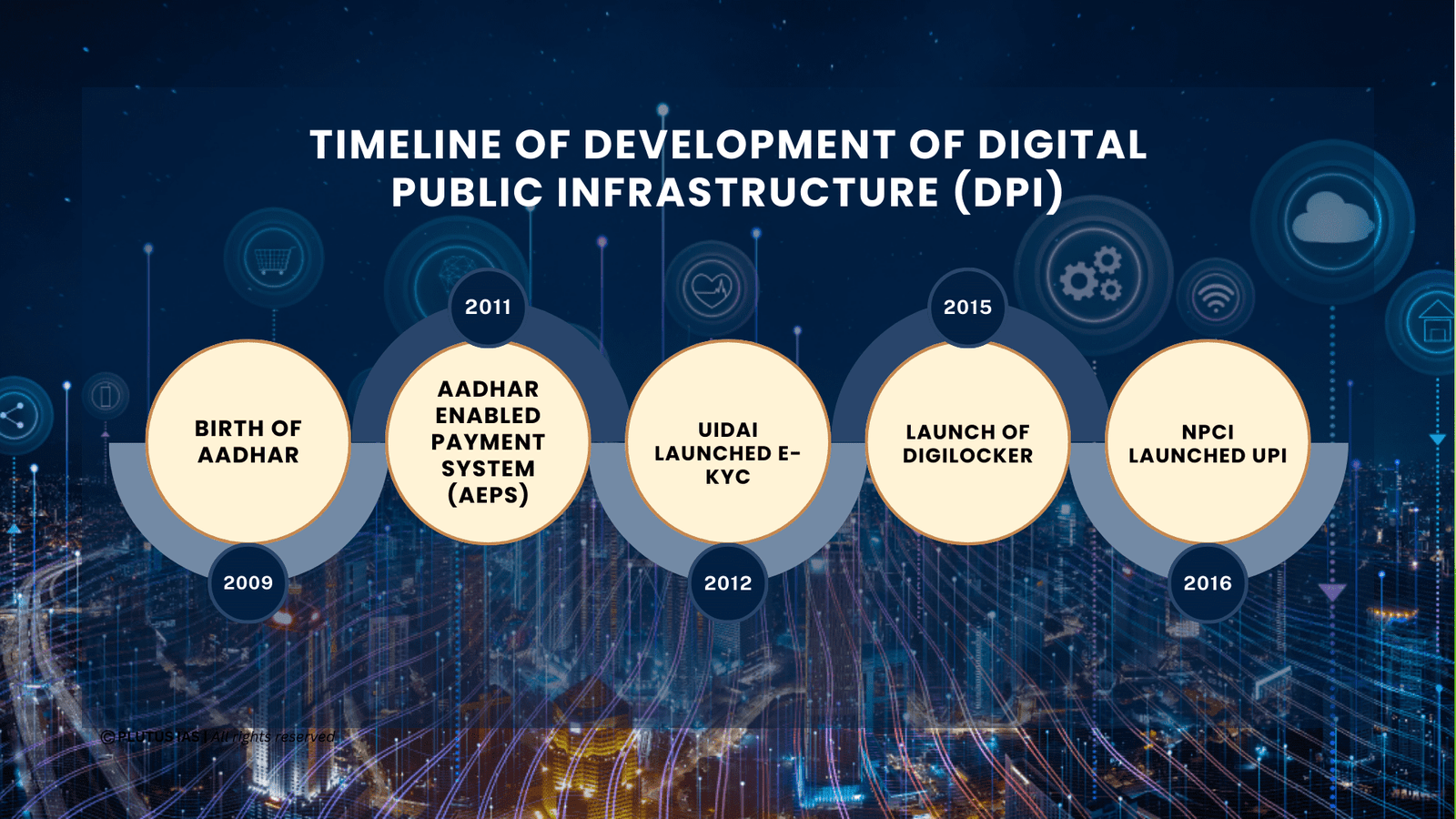30 Mar 2023 DIGITAL PUBLIC INFRASTRUCTURE
DIGITAL PUBLIC INFRASTRUCTURE
This article covers “Daily Current Affairs” and the topic details Digital Public Infrastructure. The topic “Digital Public Infrastructure” has relevance in the Science and Technology section for the UPSC CSE exam.
Relevance of Digital Public Infrastructure
For Prelims:
- What is Digital Public Infrastructure?
- What are the components of Digital Public Infrastructure?
For Mains:
- GS 3: Science and Technology
- Impact of initiatives taken to develop Digital Public Infrastructure
- Issues with building and using Digital Public Infrastructure

Digital Public Infrastructure
What is the Digital Public Infrastructure (DPI)?
Digital Public Infrastructure (DPI) refers to the technological and institutional systems that support the delivery of public services and goods through digital channels. Digital Public Infrastructure includes a variety of components, such as hardware, software, networks, data, and applications, as well as policies, regulations, and governance frameworks.
What is the objective behind the building of Digital Public Infrastructure (DPI)?
The building of Digital Public Infrastructure was done with certain objectives:
- To improve the efficiency, effectiveness, and accessibility of public services by leveraging digital technologies.
- To enhance the interaction of common citizens with the government.
- To access information without any hassles.
- To participate in the decision-making process, thus increasing the participation of people in the democratic processes.
- To enhance transparency and accountability by facilitating proactive sta sharing.
How has the evolution of Digital Public Infrastructure?
Indian Stack is the composite word used for the various initiatives taken by the government in the Digital Public Infrastructure segment. The construction of Digital Public Infrastructure has been a gradual process with modest beginnings after the formation of Aadhar. Today, other components like Digi locker, ABHA cards, UPI, and Digi Yatra are transforming the citizen-government interface.

DPI
What are the initiatives taken by India for the development of Digital Public Infrastructure (DPI)?

digital key Infrastructure
- Aadhaar: Aadhaar is a digital identity system that provides a unique identification number to Indian citizens and residents. It is used to verify identities for various public and private services, including banking, mobile phone connections, and social welfare schemes.
- DigiLocker: DigiLocker is a digital locker service that enables citizens to store and access their official documents online. It is integrated with several government agencies and can be used to access documents such as driving licenses, education certificates, and voter ID cards.
- BHIM: BHIM is a mobile payment platform that enables users to make digital payments using their mobile phones. It is based on the Unified Payments Interface (UPI) system, which enables real-time transfers between bank accounts.
- National Knowledge Network (NKN): NKN is a high-speed network that connects academic and research institutions across India. It enables collaborative research and the sharing of resources and expertise.
- MyGov: It is an online platform enabling citizens to participate in governance and policy-making. It provides a forum for citizens to share their ideas and feedback on a range of issues, and to engage with government officials.
- Digi Yatra: The initiative aims to leverage digital technology to make air travel more convenient, efficient, and secure.
- Aadhar-enabled Payment System (AEPS): It is a payment service that allows a bank customer to use Aadhaar as his/her identity to access his/her Aadhaar-enabled bank account and perform basic banking transactions
- ABHA card: It will help a person to find health centers and medical professionals and also share medical records seamlessly with doctors across India.
What are the issues in the creation and use of Digital Public Infrastructure?
On one hand, Digital Public Infrastructure (DPI) has the potential to improve public service delivery and promote economic and social development, but there are several challenges and issues associated with its creation and use. Some of these issues include:
- Digital divide: DPI requires access to digital technologies and internet connectivity, which can be limited in some parts of the country, especially in rural and remote areas. This can lead to a digital divide, where certain groups of people are excluded from accessing public services and participating in the digital economy.
- Cybersecurity: DPI is vulnerable to cyber threats, such as hacking, data breaches, and cyber-attacks. These threats can compromise the security and privacy of citizens’ data and undermine public trust in digital technologies.
- Data governance: DPI requires clear policies and regulations for the collection, use, and sharing of data. However, developing effective data governance frameworks can be challenging, as data is often collected and managed by multiple stakeholders with different interests and priorities.
- Funding and sustainability: DPI requires significant investment in digital infrastructure, software applications, and human resources. However, funding for DPI initiatives may be limited, and sustainability may be a challenge in the absence of clear business models or revenue streams.
- Digital literacy: DPI requires a certain level of digital literacy and skills among citizens and government officials. However, many people may lack these skills, which can limit the effectiveness and reach of DPI initiatives.
Way Forward
There is a need to address the challenges and issues associated with Digital Public Infrastructure and leverage its potential to improve public service delivery, promote economic and social development, and enhance the quality of life of citizens. Some key strategies for advancing DPI include:
- Bridging the digital divide: Efforts should be made to increase access to digital technologies and internet connectivity, especially in rural and remote areas, to ensure that all citizens can benefit from DPI initiatives.
- Strengthening cybersecurity: DPI systems should be designed with strong security and privacy protections to minimize the risk of cyber threats, and cybersecurity frameworks should be regularly updated and tested.
- Improving data governance: Clear policies and regulations should be developed for the collection, use, and sharing of data, and efforts should be made to ensure that data is collected and managed in a transparent and accountable manner.
- Ensuring funding and sustainability: Sustainable business models and revenue streams should be developed to support the ongoing development and maintenance of DPI initiatives, and efforts should be made to leverage public-private partnerships and other innovative financing mechanisms.
- Promoting digital literacy: Efforts should be made to enhance the digital literacy and skills of citizens and government officials, through targeted training and capacity-building programs, to ensure that they can fully participate in and benefit from DPI initiatives.
Overall, the way forward for Digital Public Infrastructure involves a coordinated and collaborative approach, involving government agencies, private sector actors, civil society organizations, and citizens, to address the challenges and opportunities associated with the digital transformation of public services and infrastructure.
Source:
Get current affairs from Yojna IAS


No Comments